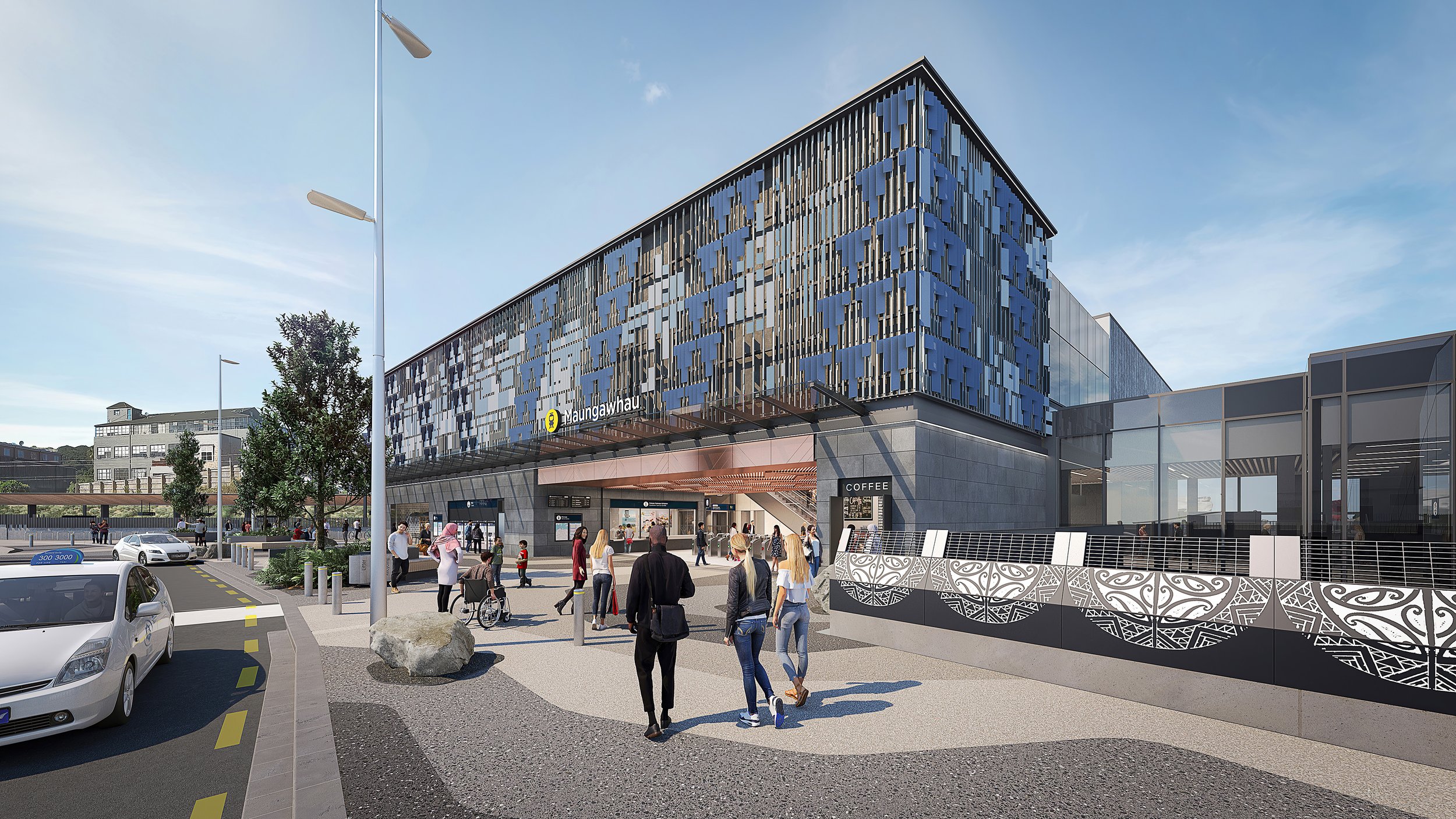Maungawhau
What was the Mt Eden train platform is being enlarged and re-developed into a station. The present stop on Mt Eden Road near Eden Terrace/Symonds Street has closed while the work is done. Find out about the closure and a bus service available.
The bigger station will cover both the existing Kingsland to Grafton line and new City Rail Link (CRL) Mt Eden to Karangahape Road line.
The main access to the new station for the citybound platforms will be at Ruru Street.
Earlier CRL plans were for an underground Newton Station around Symonds Street. In 2014, Auckland Transport announced a change in plan - to redevelop the existing Mt Eden Station and connect it to the CRL rather than build a station at Newton.
Post-CRL construction, land acquired will provide the potential for more than 100,000sqm of residential and commercial development.
Meet your new station - the final design
Click on the image to see it full-size

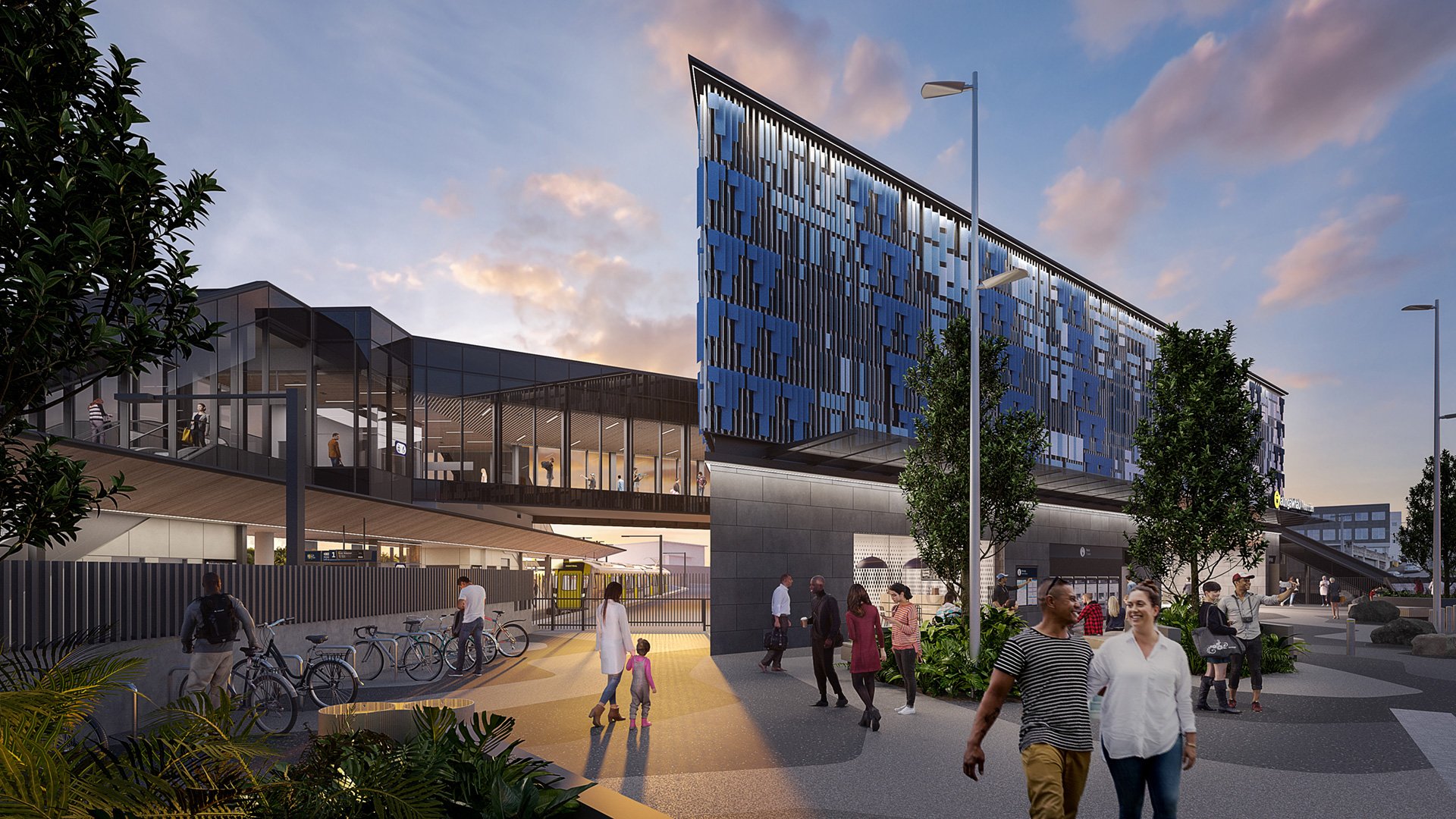
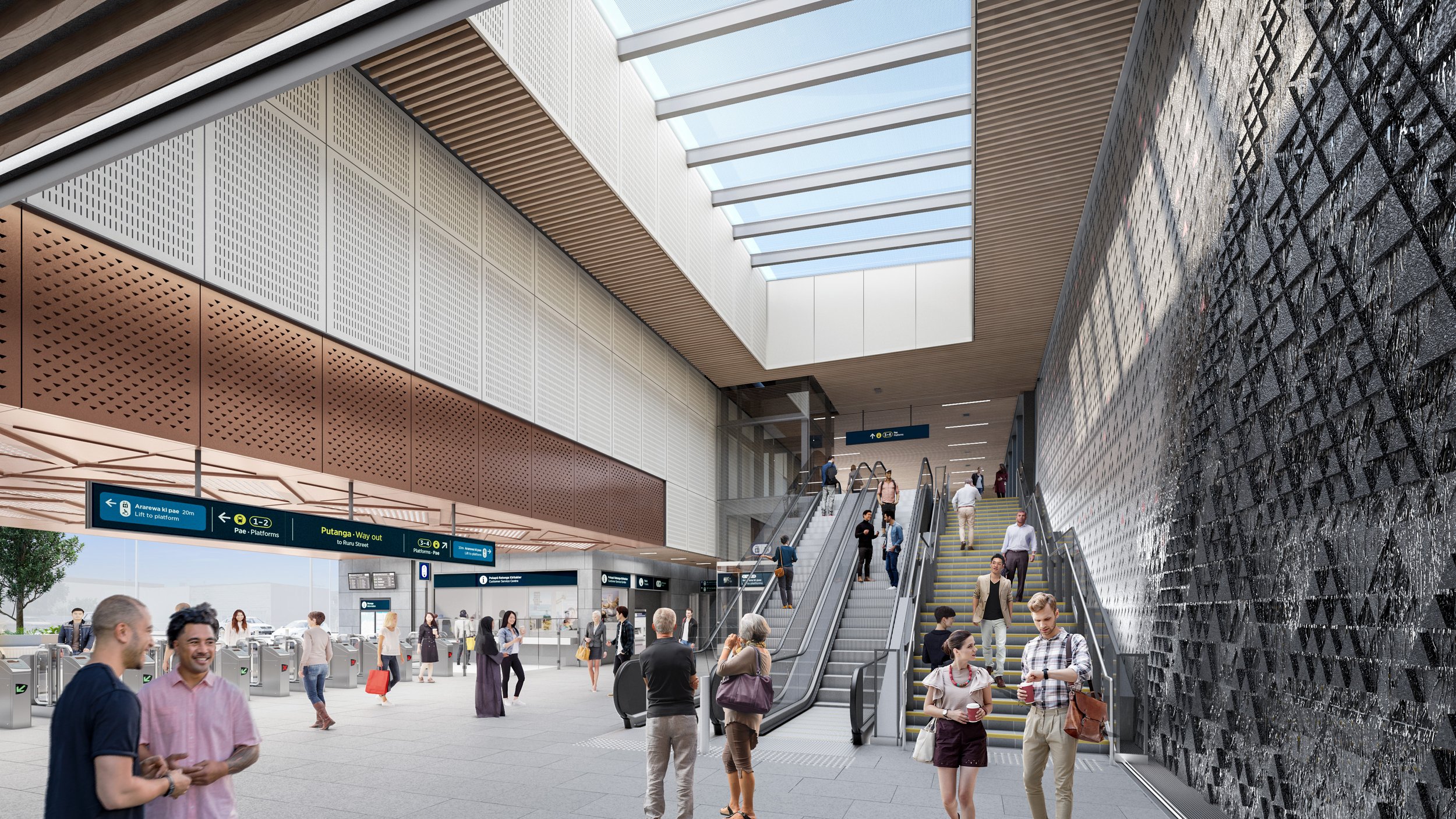
The gifted name Maungawhau
He kākano ahau i ruia mai i Rangiātea, e kore au e ngaro (I am a sacred seed, and I will never be lost)
The gifted name Maungawhau literally translates to mountain (maunga) of cork tree (whau). The whau tree was used for fishing floats and medicinal purposes.
The station’s entrance concourse wall is patterned precast concrete from floor to ceiling with basalt inserts. The giant wall design references the atua (deity) Matāoho, the creator of the basalt volcanic field here in Tāmaki Makaurau. The 53 lava-coloured, cast glass triangles are organised to represent a map of these volcanic cones.
The large main triangle is created from Maungawhau basalt and has water flowing over the surface of this section of the wall. This references Maungawhau, the basalt caverns, caves and water springs below ground. It pays respect to Parawhenuamea (atua of freshwater) and how freshwater needs kōhatu (rock) to flow. This narrative will continue with the designs on the external paved area.
And the creation story is reflected in the basalt stone clad ‘earth element’ , representing Papatūānuku, Earth Mother and the aluminium faced treatment representing Ranginui, Sky Father- with the narrative leading this design, the tears of Ranginui.
Videos: Explaining the gifted station name
The naming process
New Zealand Geographic Board Ngā Pou Taunaha o Aotearoa names railway stations and invited the public to make a submission on proposals for the names of the City Rail Link stations. These proposals were open for public submissions until 9 November 2022.
The decision was announced on 16 March 2023. Read their decision
Our design approach
Our design approach reflects our ongoing partnership with mana whenua.
City Rail Link is a world first for integrating mana whenua values, working collaboratively with eight mana whenua iwi to reflect and respond to cultural narrative.
Both the names and the designs are a unique expression of a cultural narrative for both the people and the city that hasn’t been seen anywhere else in the world, evocative of both people and place. They are quintessentially Aotearoa.
Design elements at the stations use a pattern language which aligns with the gifted te reo names, allowing the art, culture and other elements to converge. In some areas, the art manifests to reflect the cultural identity of the geographical location.
TAG ON: The tag on entrance to the new station
The holistic design process for the stations, in collaboration with mana whenua, allows for cultural expression in their design. Bringing together earth and underground elements and reflecting the culture of Tāmaki Makaurau we can create spaces that can only come from ‘here’, unique to New Zealand’s journey and history. The collective philosophy for the station designs is the Māori creation myth of Rangi-nui (the sky father) and Papa-tū-ā-nuku (the earth mother).
The integration of public art throughout the station will showcase our unique cultures, contribute towards a positive user experience and create memorable experiences for Aucklanders and visitors alike.
ENTRANCE: The experience of walking towards the new world-class station with its cultural elements
The final designs of the stations also showcase the urban design around the buildings, extending the passenger’s experience into the surrounding streets. Significant engagement work, including gathering feedback from the last set of station designs, has been carried out and acted upon, to enable seamless, accessible travel to and from the stations.
The video below was about our initial approach. Some aspects may have changed in the final designs.
History: The previous station stop
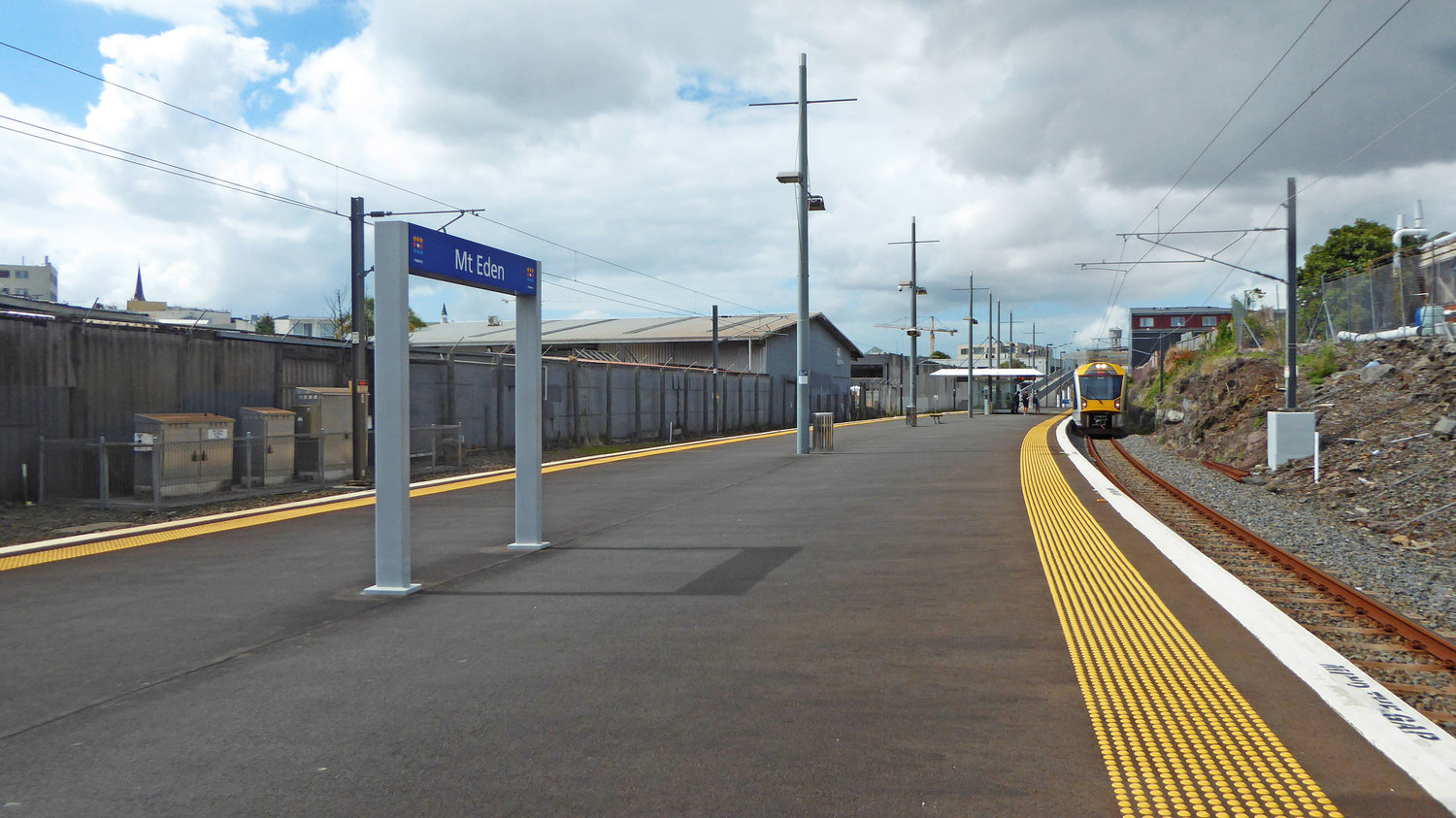
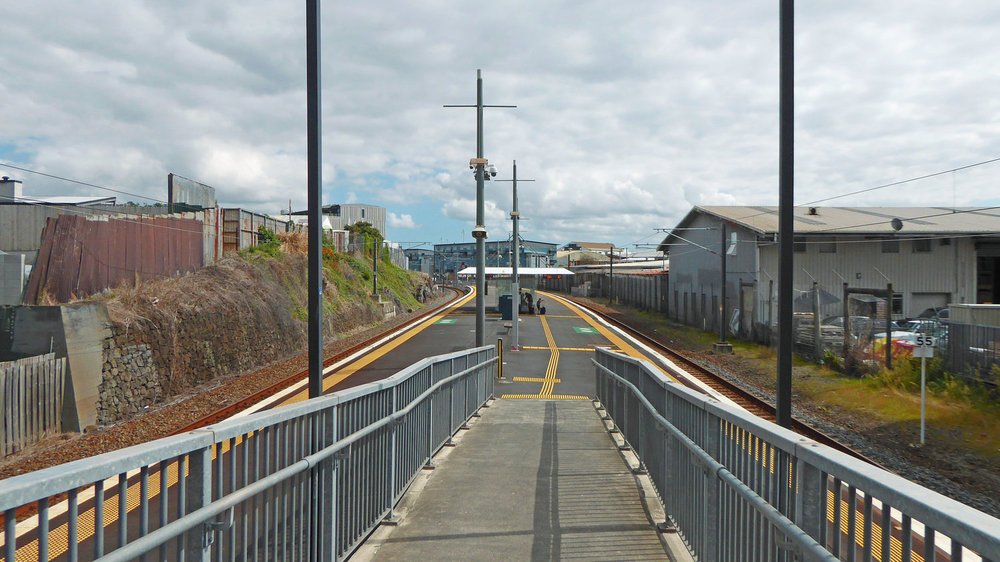
Area History
Mt Eden's railway station opened in 1880 - one of the original stations on the Northern Line.
In 1912 the island platform was established and a station building built. The original station building was removed in the 1990s and the station upgraded in 2004.
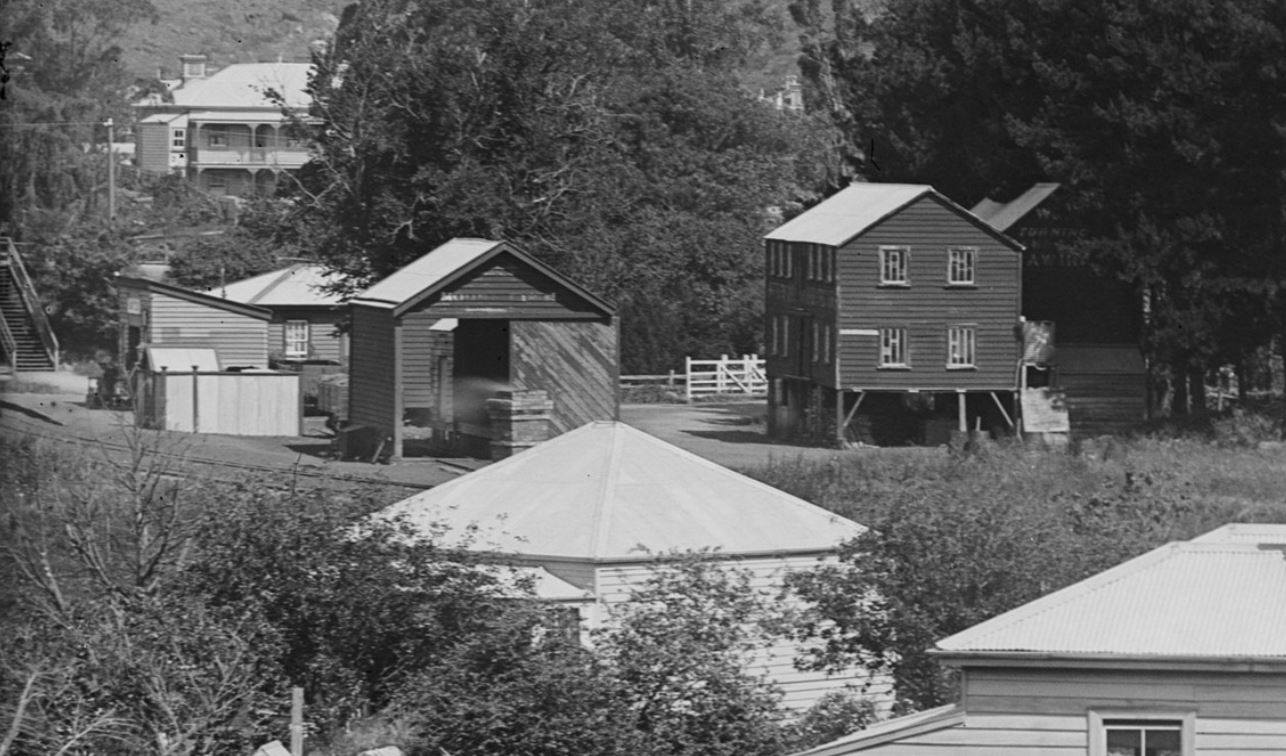
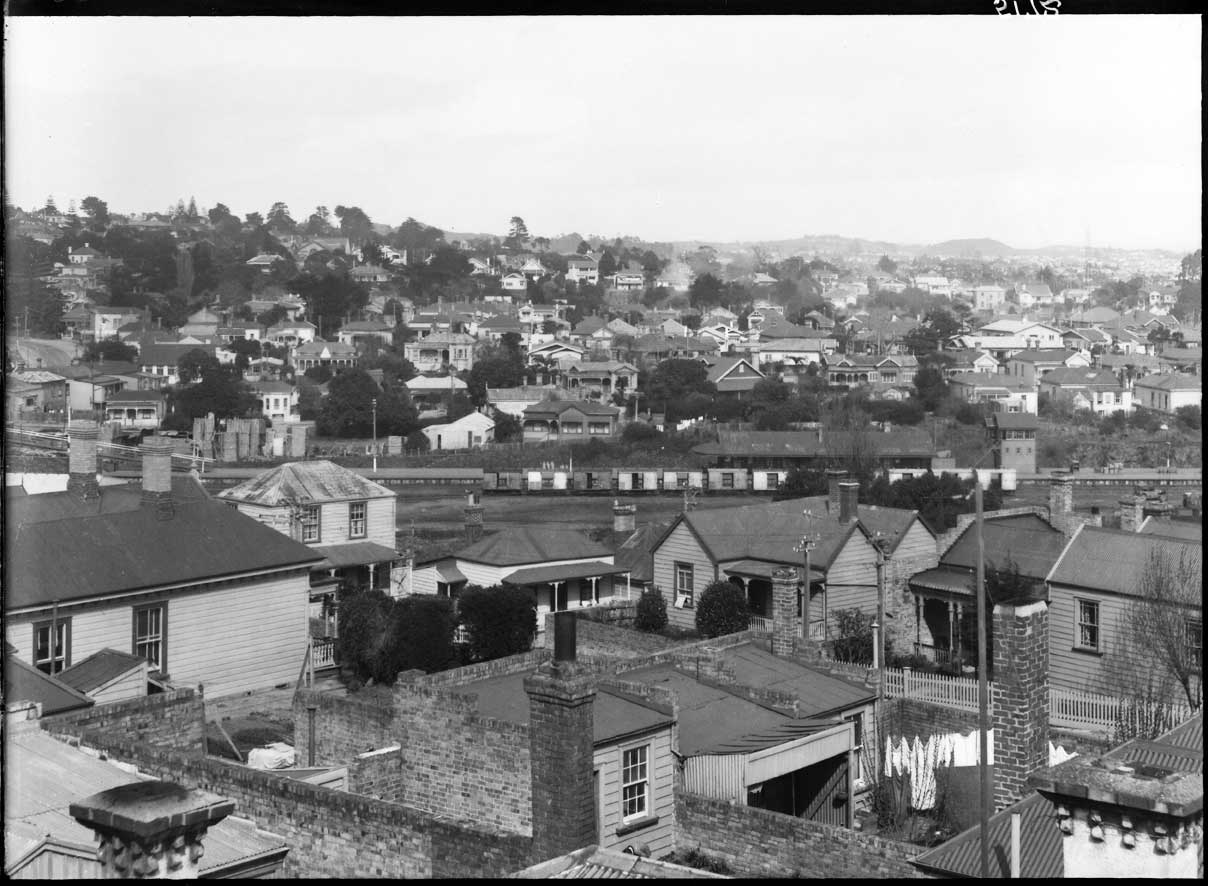
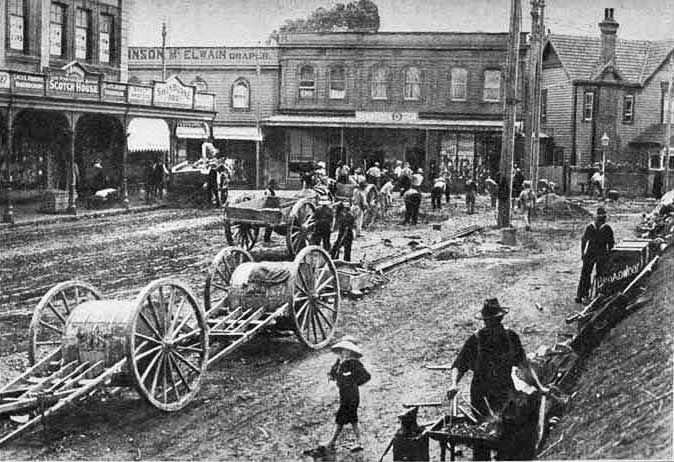
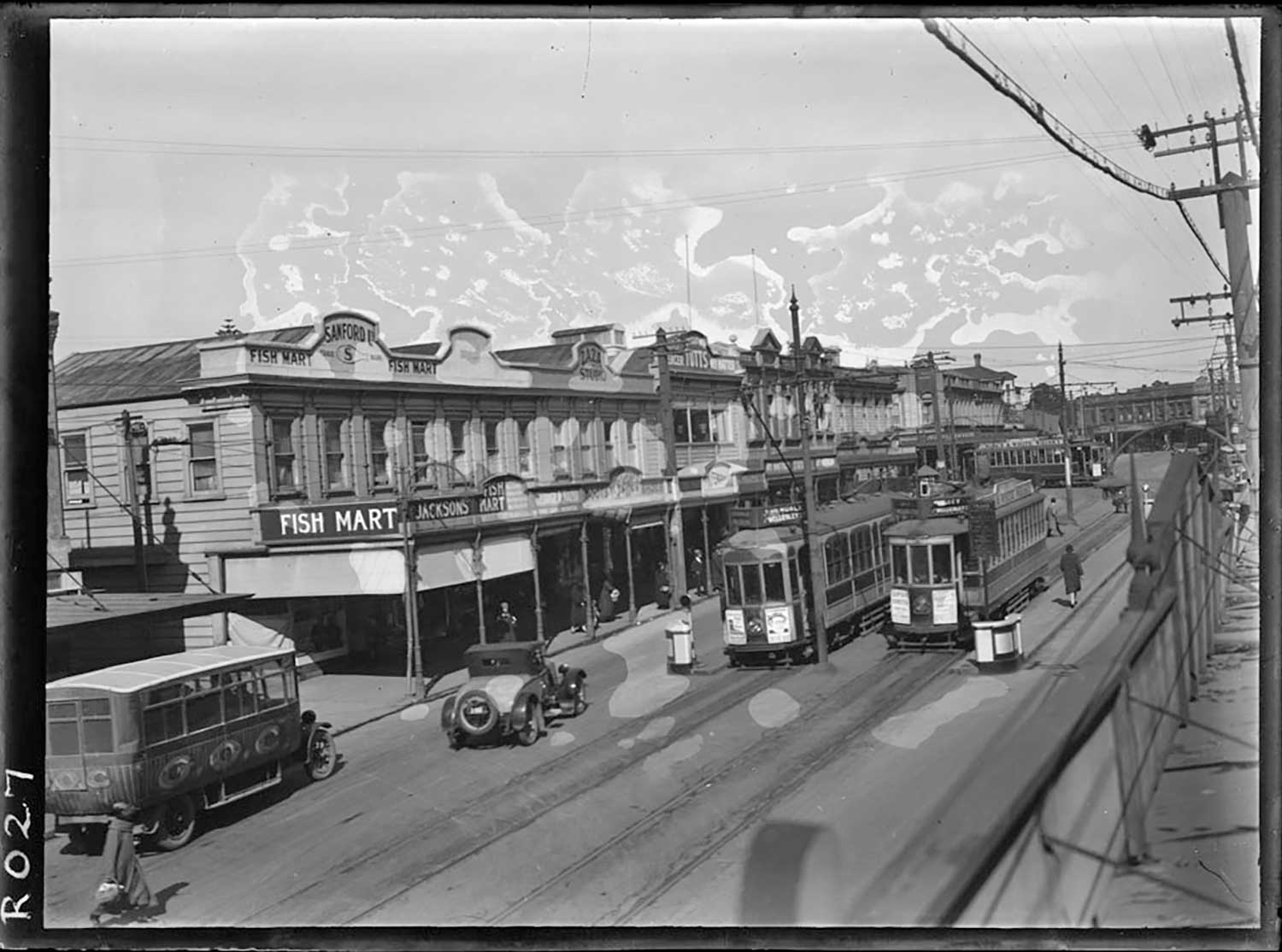
While the station is called Maungawhau (Mt Eden), it is not in the Mt Eden Village but is closer to Eden Terrace/Symonds Street Newton.
The Newton area has generally been known as Te Uru Karaka after a significant grove of Karaka trees growing in the area in pre-European times. The area is also associated with a spring known as Te Ipu Pakore.
Before the 1870s there were several brick works in Newton Gully. As the nearby industry increased, the farm properties in the valley were subdivided and became working class communities.
Plans showing the early ownership of land within the area reveal that there were multiple purchases of allotments by wealthy individuals, many of whom were hoping to make a quick profit on speculative deals. By 1850, a number of well-to do houses dotted the landscape, establishing it as a recognisable and fashionable residential area.
The junction of Upper Symonds Street, Newton Road, Khyber Pass and Mt Eden Road soon developed into a hub of shops and services. The area expanded with the advancement of industrial and commercial enterprises following the revival of the economy in the mid 1890s. Along with this was the constant upgrading of the roads necessitated by the arrival of the horse-trams in the 1880s and electric trams from 1902.
Around the same time an infrastructure was established to support that community, evidenced by the appearance of churches, hotels, schools, banks, a post office, fire station, halls and other public buildings.
Large properties bought in the early decades were subdivided for suburban development. The slopes of Newton, during the latter part of the nineteenth century, were an intensely developed small suburb of wooden houses. Situated between the retail areas of Karangahape Road and Symonds Street, Newton was a fairly densely populated area, mainly of a working class nature with many boarding houses.
TRAMS ARRIVE: Laying tram lines near the corner of Mount Eden Road and New North Road, Eden Terrace in 1908 (Photo: Sir George Grey Special Collections, Auckland Libraries, 7-A4972)
1925: Looking along Upper Symonds Street, showing trams and a bus running past the premises of Sanford Fish Mart (Photo: Sir George Grey Special Collections, Auckland Libraries, 35-R27)
Motorway arrives, houses go
Until the construction of the motorway system in the 1960s, the gully area was the location of several primary and intermediate level schools and about six churches.
In the 1950s, it was decided that Auckland needed a motorway, and the best path for it was right through Newton Gully.
MOTORWAY PLAN: This model of the proposed motorway interchange over Newton Gully was being displayed in the late 1950s (Photo: Sir George Grey Special Collections, Auckland Libraries, 580-3916)
SLUMS: Eden Terrace houses like this one in 1958 were labelled slums and earmarked for demolition (Photo: Sir George Grey Special Collections, Auckland Libraries, 580-3161)
Older residential areas identified as developing into "slums" were removed to create a passage for the motorway.
After the motorway was cut through, much of the remaining housing stock was utilised for light industrial use and often rebuilt for factory and warehouse uses.
PORTERS: Looking west along Porters Avenue in 1964 (Photo: Sir George Grey Special Collections, Auckland Libraries, 580-9427)
AERIAL: Eden Terrace in 1968 (Photo: Sir George Grey Special Collections, Auckland Libraries, NZ Map 7302)
Since the 1990s there has been a reverse trend of rebuilding in the area. The remnants of Newton soon turned from residential to commercial and the old houses were pulled down, replaced by commercial buildings. Other industrial buildings were converted for residential use including some turned into apartment blocks.
While the motorway may have eradicated the old residential, suburban Newton, a part of old Newton remains in the surviving villas, the street names and the old bluestone kerb stones. Slowly over the last fifteen years, people have started living in Newton again, especially in apartments and townhouses.
Grafton Station
The station is near our construction area - and St Peter’s College (SPC).
From the time the school opened in 1939, many students came from the western suburbs of Auckland, using the train service to attend the school. Until 1964 the nearest platform was Mount Eden station, a ten-minute walk to the school. By 1964 about 250 SPC students were using the train and walking between Mount Eden station and the school.
A teacher from SPC, Brother T. A. Monagle, approached the New Zealand Railways Department to request a station for the train outside the school. The college had several reasons for asking for a station, including vehicle traffic which had increased in the area, and to prevent accidents when the students were boarding the train. The Minister of Railways at the time, Mr John McAlpine, came to see for himself and walked to Mount Eden station from the school. The visit was a success!
Boston Road railway station was built near SPC on the Western Line of the Auckland rail network, beneath the State Highway 1 overbridge. The first train stopped at this new station at 8.30am on Tuesday 15 September 1964.
The station later closed on 10 April 2010, the day after the opening of the new Grafton Station, built to better serve the central area including the hospital and local university developments. Thanks to Brother T. A. Monagle, SPC students continue to have direct access to the train station for their daily commute.
The photo below shows two tracks at Boston Road, the Main Line and the Loop with train 53 to Helensville, the school train. (13 April 1964).
The photo below shows the 56 train from Opua about to cross the "pedestrian crossing". Students from SPC wait for the train to pass. The pathway is in the foreground (under the suitcase). Mt Eden Corrections Facility is in the background. (17 October 1957).





